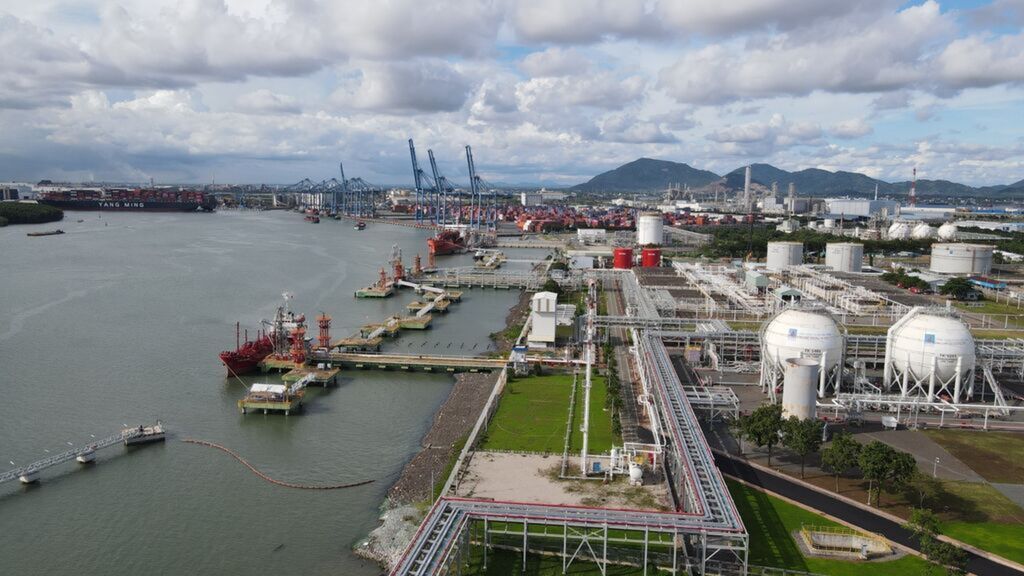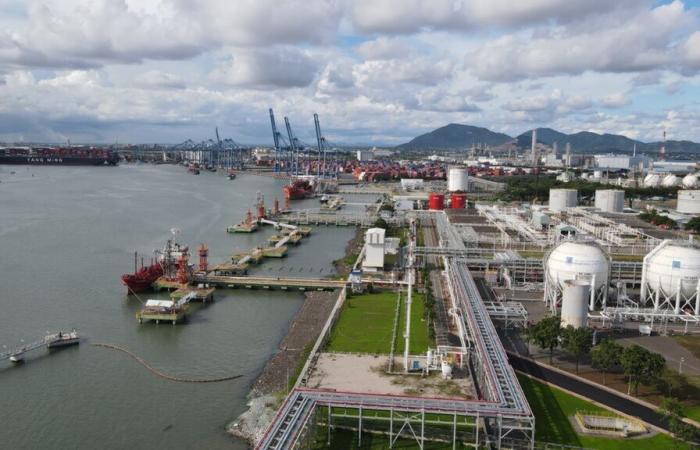>> The energy market in Vietnam is experiencing major changes in 2026-2030
>> The Vietnam Vietnam LNG power plant connected to the network
>> Petrovietnam changes its name into a national group of industry and energy of Vietnam
 |
| LNG import operations at the Thi Vai terminal. |
| Photo : VNA/CVN |
Boost for investors in LNG
Nguyên Quôc Thâp, president of the Vietnamese oil association, said that the drop in customs duties would offer strong incentives to investors in the GNL value chain, importers like PV Gas to electricity producers like PV Power, including end users.
This decision also testifies to the government’s desire to refine its energy policy by balancing the interests of the State, investors and consumers. A framework more favorable to investors should encourage the development of LNG infrastructure, in particular terminals, storage, regzéification facilities and power plants powered by LNG.
As part of the VIIIe Energy development plan, Vietnam aims to build 23 gas power plant projects by 2030, including 10 using national gas, for a total capacity of 7,900 MW, and 13 using imported LNG, for a combined capacity of 22,400 MW.
These projects will play an essential role in the increase in the national supply of electricity and in the progression towards the objective of zero Netnam emission of Vietnam by 2050. The NHON TRACH 3 power station, the first GNL-Electricity Central using imported gas, has been connected to the national network in February and should enter into commercial service in July.
Developed by PV Power, a subsidiary of Petrovietnam, its workload was completed at 96%, just like that of the Nhon Trach 4 power station. These two power stations should be fully operational in 2025. In order to guarantee a stable supply of long -term fuel, PV Gas and PV Power have signed a 25 -year -old LNG supply agreement for NHON TRACH 3 and 4 centers.
While national gas reserves are decreasing, PV Gas, currently the only long -term LNG provider in Vietnam, accelerates its investments in import terminals in order to maintain the supply of electricity and industry producers. The drop in prices should help reduce the cost of inputs for electricity produced in LNG and benefit consumers.
Political gaps remain
If the price reduction is a welcome measure, more global reforms are necessary, said Mr. Thâp. A unified regulatory framework covering investment, infrastructure, imports and LNG trade is essential to achieve the national energy security and long -term durability objectives.
In the same vein, a PV Gas representative highlighted the persistent political challenges, such as the lack of guaranteed purchase volume, the lack of clarity of LNG prices’ prices repercussion on electricity prices and the vagueness of cost regulations.
 |
| Storage and Port of Port of GNL of Thi Vai (capital of Phu My, province of Bà Ria-Vung tàu to the south) |
| Photo : VNA/CVN |
These obstacles complicate projects planning, production pricing and commercial negotiations throughout the LNG value chain. PV Power has also underlined the difficulties of access to international funding, the imported LNG remaining a new investment model in Vietnam.
To obtain foreign loans, projects generally require minimum purchase guarantees (70 to 80%), a prices repercussion mechanism similar to that of national gas, and clear access to transportation land and infrastructure.
A stable supply
Petrovietnam has also stressed that electricity production from LNG should not be treated like traditional energy sources on the competitive electricity market, as long -term LNG contracts are necessary to guarantee stable supply and reduce costs. Legal reforms to support the energy transition. To promote the objectives of clean energy, the Vietnamese oil association has called for the revision of many laws, in particular those relating to electricity, the protection of the environment (in particular the accounting of carbon emissions), taxation, marine resources, investment, public procurement, construction and land.
It also recommends aligning the development of the electricity market on the VIII energy development plan, creating integrated LNG infrastructure centers (terminals, power plants and industrial zones) and to extend transport networks for national use and export, in particular for electricity produced from LNG.
The association has also called for an update of organizational and financial regulations for public energy companies such as Petrovietnam and EVN.
VNA/CVN








